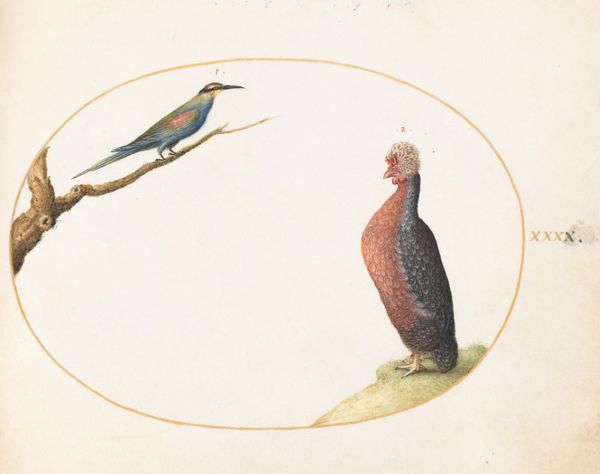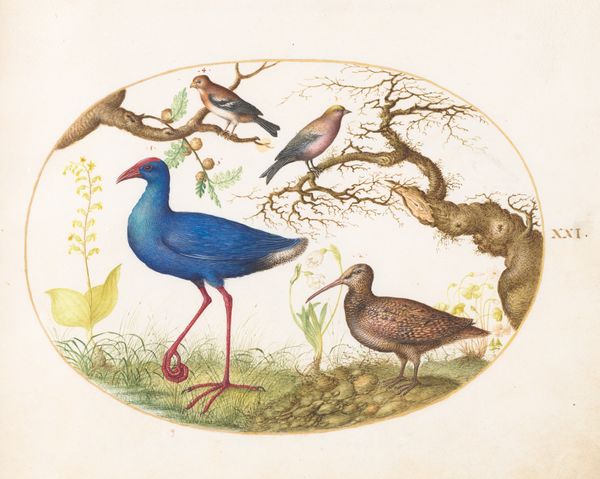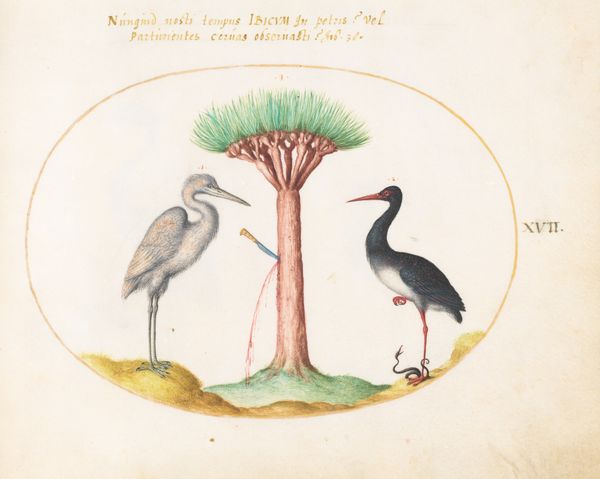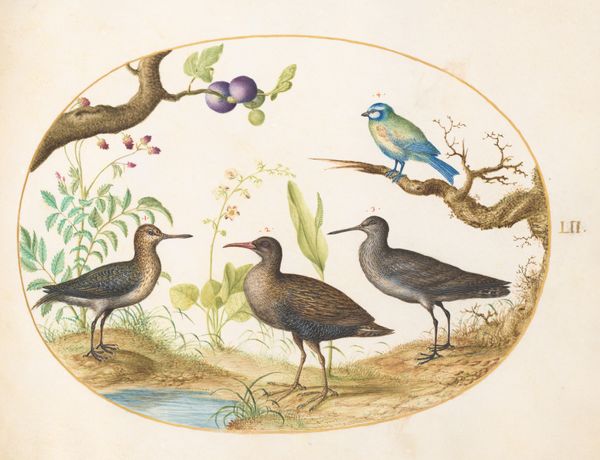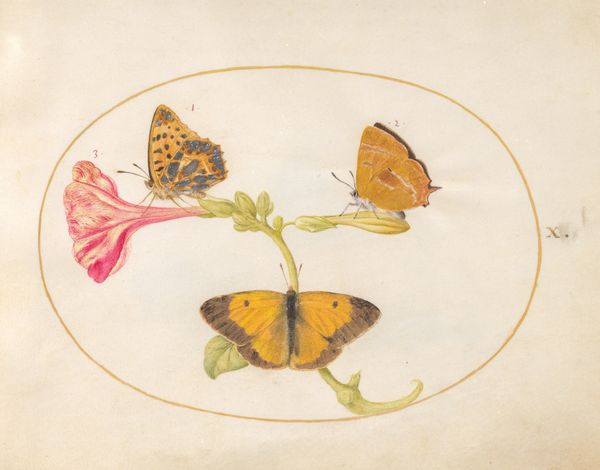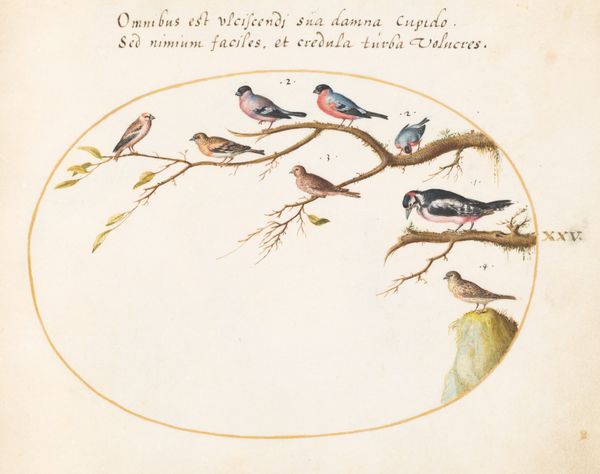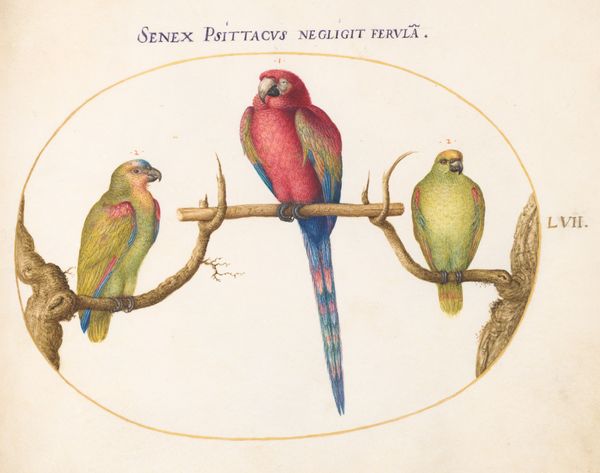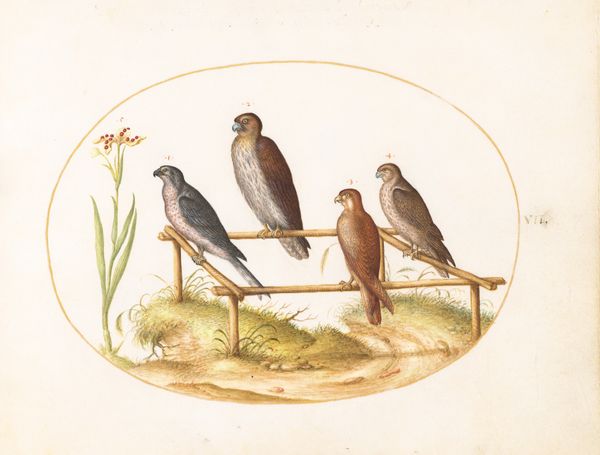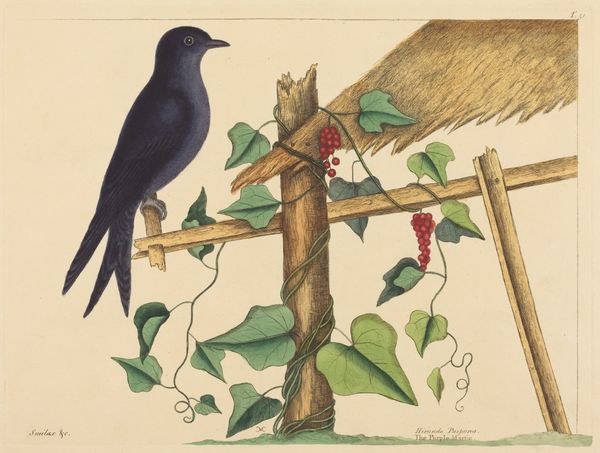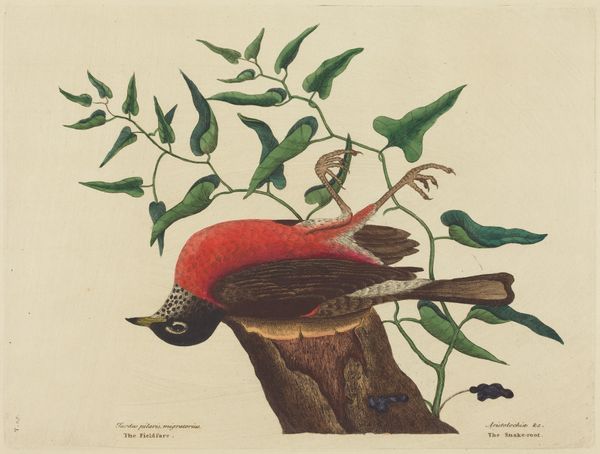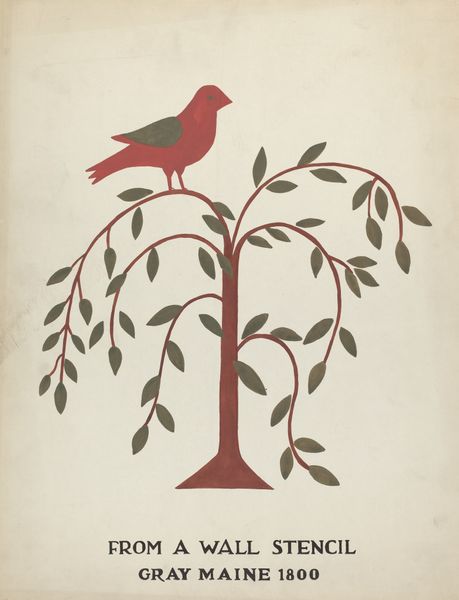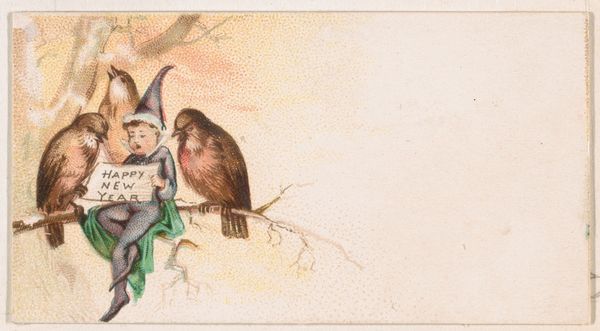
drawing
#
drawing
#
toned paper
#
water colours
#
possibly oil pastel
#
coloured pencil
#
coffee painting
#
animal drawing portrait
#
watercolour bleed
#
watercolour illustration
#
watercolor
#
warm toned green
Dimensions: page size (approximate): 14.3 x 18.4 cm (5 5/8 x 7 1/4 in.)
Copyright: National Gallery of Art: CC0 1.0
Curator: Let’s consider Joris Hoefnagel's “Plate 53: Three Brightly Colored Birds," a work created circa 1575-1580. The artist employed watercolor and perhaps coloured pencil and oil pastel on toned paper. What are your initial thoughts on it? Editor: Well, the immediate thing that strikes me is the composition. The birds are vibrant, almost startling against that pale backdrop. It's quite serene, balanced somehow between the vibrancy and quietude. Curator: I agree. Hoefnagel was working within a complex period of scientific exploration and expanding global trade. These avian depictions speak to that very moment. Editor: How so? The presence of that elaborate nest also speaks of cycles, regeneration—earthly and maybe spiritual as well. And the numbering on the birds--it's an order, an act of placing these animals within a knowledge structure. Curator: Absolutely. European society’s understanding of the world was broadening drastically at that point in history. Consider how artistic practices shifted to catalog, document, and essentially *claim* these newly "discovered" life forms from different geographies. Each bird type here might stand in for an entire, unknown continent of species yet unrecorded. Editor: The colors themselves, the dominant reds and blues...do you think they represent specific political or cultural symbolism within 16th-century Europe? Curator: It is definitely something to explore. Colors functioned quite vividly back then. But it is worth exploring beyond Hoefnagel himself, he comes from a privileged background; it is worth inquiring into which social-economic frameworks enabled this work and at what expense. The question becomes "Whose visions do such images amplify, and what critical perspectives are we possibly overlooking?” Editor: This piece carries so much more weight when you examine it through such lens. I think I was initially drawn in by the aesthetic pleasure of the colors, and the graceful depiction. Curator: It's a perfect demonstration of the intertwining of beauty and the systemic power dynamics that surround it, even back then. A reminder for critical, intersectional thinking, wouldn't you agree? Editor: I'd say it certainly re-wires our ways of viewing visual creations and imageries that for centuries were only regarded from positions of pure artistic and symbolic values.
Comments
No comments
Be the first to comment and join the conversation on the ultimate creative platform.
